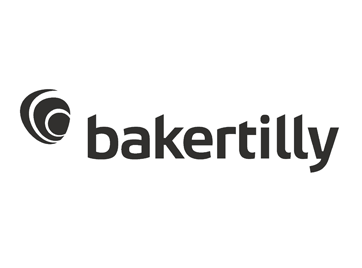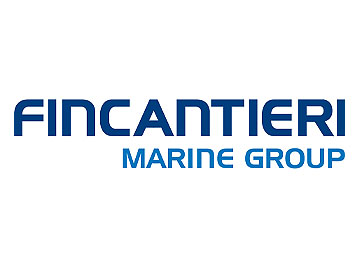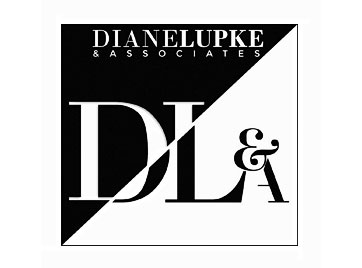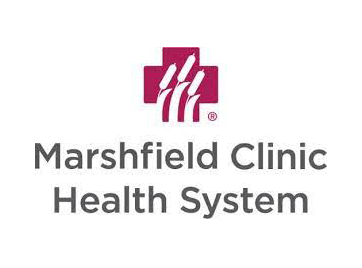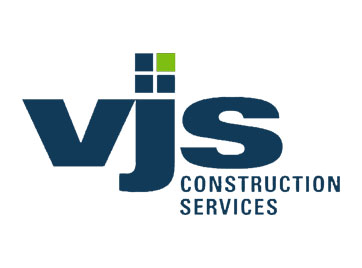
May 3, 2019
In This Edition…
- Legislature’s Budget-Writing Committee Wraps-Up Public Hearings; To Begin Work on Reshaping Gov. Evers’ Budget
- State Budget Provision Threatens Key Local Economic Development Tool
- WEDA Legislative Tracker: We Keep Track So You Don’t Have To
- Forward Analytics Issues “Falling Behind: Migration Changes and State Workforce”
- Another Dark Store Attempt Fails
Legislature’s Budget-Writing Committee Wraps-Up Public Hearings; To Begin Work on Reshaping Gov. Evers’ Budget
The Joint Finance Committee, the Legislature’s powerful budget-writing committee, last week completed the last of four public hearings across the state on the 2019-21 state budget bill (AB 56 / SB 59).
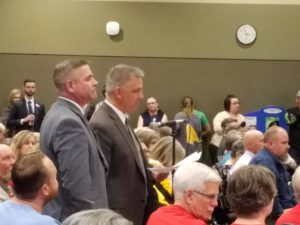
Thank you to all the WEDA members – including James Otterstein, Dan Cunningham, Patrick Schloss, Rob Kleman and Peter Thillman – who took time out of their busy schedules to testify before the committee on a handful of key economic development policies in the budget. Most importantly, WEDA
members urged the committee to remove a budget provision that would significantly limit TIF developer grants. Their commitment certainly paid off, as it appears the TIF provision will be eliminated from the budget.
Earlier this week, the Legislative Fiscal Bureau released a list of non-fiscal policy items included in the budget that the agency recommend be removed from the bill. In addition, the co-chairs of the Finance Committee issued an expanded list of all items that will immediately be removed from Governor Tony Evers’ budget proposal as part of the committee’s first action on the bill. Items to be removed that are of interest to WEDA include:
TOP WEDA BUDGET CONCERNS TO BE REMOVED FROM THE BILL:
- The provision to limit Tax Incremental Financing (TIF) developer grants to 20 percent of a TIF district’s total project costs. WEDA opposes this proposal.
- The provision to limit the manufacturing portion of the Manufacturing and Agriculture Tax Credit to only apply to the first $300,000 in qualified production income. WEDA opposes this proposal.
- The provision to cap the Enterprise Zone Tax Credit program to a total of 35 zones statewide. WEDA opposes this proposal.
WEDA will continue to closely follow the budget process and meet with lawmakers to ensure The TIF provision, MAC tax credit rollback and Enterprise Zone language remains out of the budget bill.
OTHER ITEMS OF NOTE TO BE REMOVED FROM THE BUDGET:
- The provision to require TIF project plans to contain “stress tests” in their financial projections so that local governments better understand the risks of TIF utilization if projects fail to materialize as promised.
- The provision to eliminate the Wisconsin Career Creator Program that is scheduled to provide $20 million in workforce training funding in the upcoming biennium.
- The provision to increase the minimum wage (from 7.25 per hour) to $8.25 in 2020, $9.00 in 2021, and an additional 75-cents per year in the next biennium.
- The provision to restore the state’s prevailing wage law for state and local projects of public works.
- The provision to eliminate Wisconsin’s “right to work” law.
- The provision to transfer the following grant programs from the Department of Workforce Development to the Department of Public Instruction: career and technical education incentive grants, career and technical education completion awards, technical education equipment grants, and teacher training, recruitment and development grants.
- The provision to require WEDC to post a searchable database of all final contracts and amendments to contracts on its website within 30 days of the finalization of such contracts or the amendment to such contracts.
- The provision to require WEDC to report only the creation and retention of those jobs that meet the salary, benefit and other requirements of the programs for which they are being reported.
- The provision to require WEDC to implement certain contracting requirements and underwriting review.
- The provision to close the Dark Store property tax loophole in Wisconisn. WEDA supports this proposal. Although it will be removed from the budget, a stand-alone bill has been introduced for consideration by lawmakers.
- The provision to modify the valuation factor under county and municipal levy limits to allow county and municipal governments to increase levies by the greater of the percentage change in equalized value due to new construction or 2 percent, beginning with levies set in 2019.
While removal of WEDA’s top budget concerns is great news and a fantastic start to the budget process, things can and do change as the process unfolds. The WEDA Government Affairs Team will stay vigilant as the Joint Finance Committee works on economic development-related issues. The Committee will begin voting on (and modifying) the budget bill on May 9.
State budget provision threatens key local economic development tool
By Michael Welsh, WEDA Legislative Affairs Director
The state of Wisconsin invests in multiple, highly effective economic development programs to help attract private capital, strengthen critical industries and spur job creation. However, local communities that serve as the main engines that drive business growth and prosperity across the state have very few economic development tools at their disposal.
In fact, Wisconsin municipalities only have one consistently reliable financial incentive to promote private development, tax base growth, and job opportunities: Tax Incremental Financing (TIF). It is a unique funding tool successfully used by communities across the state since 1975 to spur economic development that would not otherwise occur. Since its inception, TIF has increased property values in Wisconsin by over $16 billion.
Gov. Tony Evers state budget proposal includes a troubling provision that would significantly diminish the value of TIF as a local economic development tool. The provision would place a 20% cap on TIF developer grants, and in the process basically eliminate use of pay-as-you-go TIF, discourage below-market redevelopment projects, and limit TIF flexibility for Wisconsin communities.
While the provision is set to be removed from the budget bill by the Legislature’s budget-writing committee, it is important to ensure the proposal does not find its way back into the spending bill during the budget process or reappear as a stand-alone bill. TIF is already viewed negatively by a small, but vocal collection of policymakers who are eager to rollback the flexibility and benefits of TIF. It is important not to give them that opportunity.
When a municipality creates a Tax Incremental District (TID), the property value in the district is determined and becomes the TID’s base value. All taxing jurisdictions, including school districts and counties, continue to receive tax revenues from the base value. But as the value of the property within the TID grows, the increased tax collections are placed in a segregated fund used to pay for the project development costs associated with the TID. When a TID’s project costs are paid off, the increased tax revenue is shared with all taxing jurisdictions.
Although the use of TIF varies from project to project and community to community, TIF is generally used by local governments to fund public infrastructure, redevelopment, and other incentives to attract new and expanding businesses. Tax incremental financing is not a tax break or a hand out to businesses, but rather a proven financial incentive that sparks development and ultimately reduces the tax burden of other taxpayers.
Unfortunately, the budget provision to restrict TIF developer grants would put Wisconsin at a competitive disadvantage, radically altering the use of TIF in Wisconsin and jeopardizing its role as the most powerful economic development tool at the local level. Its potential impact on pay-as-you-go TIF is especially alarming.
The pay-as-you-go approach, which is increasingly used by Wisconsin municipalities, shifts the financial risk of development from the taxpayer to the developer. Under the PAYGO model, the developer funds the up-front cost of the project, and in exchange, the municipality agrees to provide financial incentives through new tax revenue generated by the TID. The state budget proposal would severely limit the use of pay-as-you TIF and shift the financial risk back to the local taxpayer.
To illustrate the impact on future TIDs, a leading municipal financial advisor has said nearly 60 TIDs they have worked on since October of 2016 would not have occurred had the proposed 20% restriction been in place.
The budget proposal would also make it more difficult for communities to redevelop older neighborhoods and more urban areas. These types of redevelopment projects often face unique challenges, such as obsolete buildings, contamination and decaying infrastructure. Without adequate financial incentives and flexible financing options provided by current TIF law, many of these redevelopment projects would not be economically possible and simply would not happen.
Tax incremental financing in Wisconsin has long been a driver of local economic success, helping to revitalize urban corridors and bolster industrial growth in rural areas. Wisconsin can’t afford to lose this momentum, but instead must ensure TIF law is maximized to keep Wisconsin competitive in a global environment.
It’s imperative to keep the TIF developer grant restriction out of the state budget bill and preserve the flexibility needed for municipalities to engage directly in economic development.
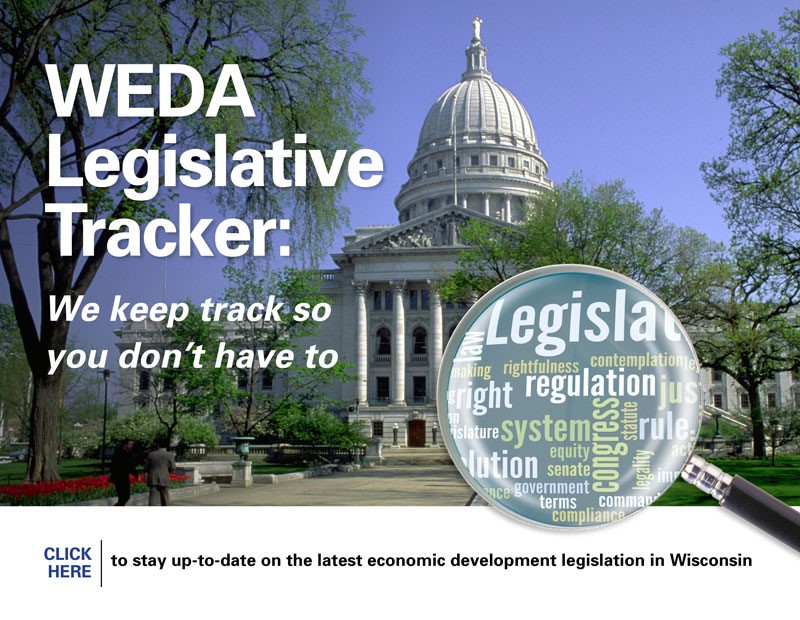
WEDA Legislative Tracker: We Keep Track So You Don’t Have To
In every two-year legislative session in Wisconsin, thousands of bills are introduced and considered by lawmakers. While not all of them impact economic development, many can have a significant effect on the direction of the state’s economy and the economic development profession.
WEDA created the Legislative Tracker tool to allow members to stay up-to-date on the latest economic development legislation. The Tracker lists and allows members to follow and learn more about the bills WEDA is lobbying on and monitoring as they work through the legislative process. The Tracker includes the bill number, a brief description of the bill, its status and WEDA’s position on the proposal.
Click here to review the WEDA Legislative Tracker
Forward Analytics Issues “Falling Behind: Migration Changes and State Workforce”

A new report issued today by Forward Analytics, “Falling Behind: Migration Changes and State Workforce,” reveals troubling trends for the future of Wisconsin’s workforce landscape.
“Wisconsin has too few young people to replace retiring baby boomers over the next 15 years, so the state must turn to migration to grow its workforce,” said Forward Analytics Director of Research Dale Knapp. “However, during 2010-2015, the state lost population among key workforce groups, with the most troubling being the net outmigration of young families, a group that Wisconsin typically attracted.”
The report shows that the ability of a state to naturally grow its workforce over time can be measured by comparing the number of residents under 16 years of age to the number who are 50 to 64 years of age. Many in this older group will likely leave the workforce over the ensuing 15 years and be replaced by those in the younger group. The larger the ratio, the greater ability to grow the labor force.
For example, in 1990, Wisconsin had 1.75 residents under 16 for each resident 50 to 64 years of age, and the state’s workforce expanded almost 17% over 15 years. By 2000, this ratio had fallen to 1.42 young people per resident near retirement, and the labor force expanded just 4.1% during 2000-15. At 0.87 in 2017, this long-term indicator is pointing to a shrinking labor pool over the next 15 years.
During both 2000-05 and 2005-10, the state added more than 40,000 children from migration. However, during 2010-15, net migration of children to the state totaled fewer than 10,000.
“This large drop in the net migration of children portends trouble for long term workforce growth in Wisconsin,” said Knapp. “For Wisconsin to position itself for future success, we must find ways to keep the people we have as well as bring people back into our state.”
Click here to read the full report, “Falling Behind: Migration Changes and State Workforce.”
Another Dark Store Attempt Fails
By Jerry Deschane, League of Wisconsin Municipalities Executive Director
Once again, the traveling troupe of Dark Store tax attorneys and appraisers-for-hire has failed to persuade a local judge. On April 4, 2019, Portage County Circuit Judge Thomas Flugaur dismissed a national chain store’s attempt to have its property tax bill cut in half. Lowe’s Home Centers, LLC claimed that the Village of Plover was charging them property taxes based on twice the actual value of their property. Judge Flugaur wouldn’t bite. The Judge’s decision is here.

Although the village “won” this case, it wasn’t free nor was it easy. It cost the village more than $80,000 to hire the expert attorneys and appraisal specialists that were needed to win a four-day trial. As with other Wisconsin Dark Store challenges, the cost of defending the assessment plays a practical and significant role in deciding whether or not to negotiate a settlement. Many times the municipality chooses to settle, rather than incur the cost and risk of a trial. Other Dark Store appeals have cost even more than Plover’s to defend against.
The Plover case played out similarly to other Dark Store road show performances. The property owner offered up a smorgasbord of vacant, boarded-up properties as “comparables,” including one former department store that had been vacant for four years. The Village countered that the property in question was in the middle of a popular shopping district that had a very low vacancy rate; by no means was it comparable to a dark property. In the end, the judge decreed that none of the properties offered by the paid experts were truly comparable. Under Wisconsin law, that finding next leads to an assessment of the cost of the property; what it would cost to build a comparable store.
Under the cost approach, it seemed that the two sides were in agreement. The Village’s cost-approach figure was $8.5 million; the property owner’s expert came up with $8.9 million. (Both figures exceed the building’s actual assessment value.) But then, the property owner’s hired expert took his estimate one step further, claiming that the property had to be devalued by 50% due to “functional depreciation” of the property. The judge tossed that discount out, pointing out that the $8.5 million and $8.9 million figures both already accounted for depreciation. (The Lowe’s building has been standing for 10 years.)
In his decision, Judge Flugaur repeatedly quoted from the Wisconsin Property Assessment Manual, which states, among other things, that “The assessor should avoid using sales of improved properties that are vacant (‘dark’) or distressed as comparable sales unless the subject property is similarly dark or distressed.” So, once again, despite a local tax assessment that was done “by the book,” treating the property owner fairly, a major retailer sued the village, forcing it to incur tens of thousands of dollars to defend other taxpayers from a tax shift. On behalf of taxpayers in Plover and dozens of other cities, villages and towns that are under similar assault, we respectfully but urgently ask that the Wisconsin Legislature take up and pass the Dark Store legislation to make it clear once and for all that the Dark Store Road Show is over.
WEDA supports legislation (SB 130/AB 146) to close the dark store property tax loophole to prevent an unfair property tax shift to main street businesses and preserve the success of TIF districts across the state.
The bill closes the loophole by requiring assessors to consider certain factors when comparing properties to determine the value of a property. It provides an active property being assessed cannot be compared to a property that is vacant, or if restrictions have been placed on the comparable property’s highest and best use. It also clarifies that assessors may consider actual lease amounts when valuing property.
Unless lawmakers act to close the loophole, this selective application of the property assessment methodology will continue to benefit one property taxpayer over another, jeopardize the viability of TIF districts and hinder local development projects.




